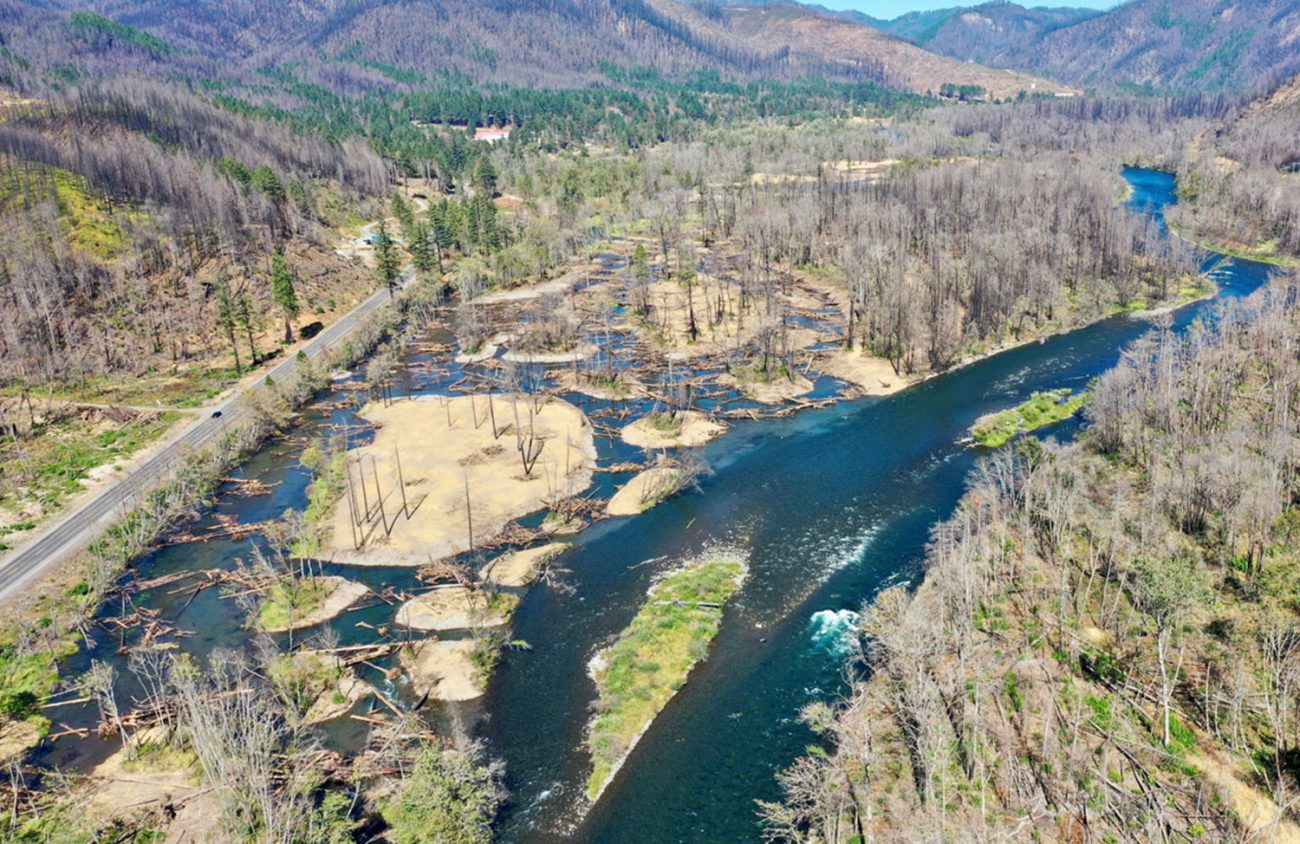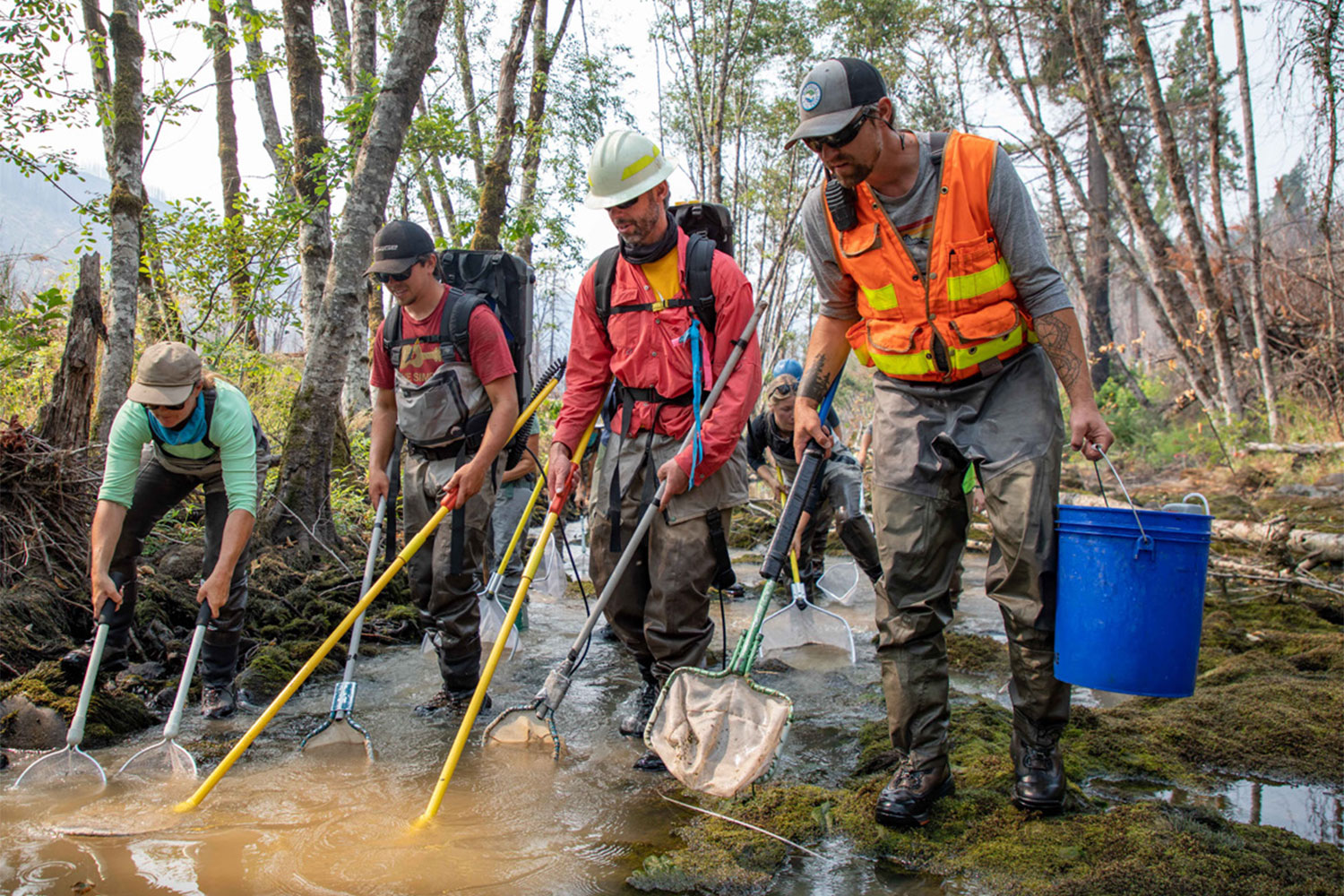The McKenzie River Trust, Willamette National Forest, and BCI Construction recently completed Phase One of the Finn Rock Reach floodplain restoration project.
The project along the McKenzie River above Quartz Creek enhances valuable floodplain habitat for endangered Chinook salmon, bull trout, and western pond turtles. The approach can also help buffer the river from debris slides and serve as natural storage for clean water.
“Rivers have been harnessed and confined for the last 150 years,” says Joe Moll, Executive Director for the Trust. “Seeing the water reinhabit such an expansive, diverse floodplain offers some hope in trying times.”
Finn Rock Reach is the latest testing ground for a creative approach to restoration that aims to bring back much of the complexity that makes floodplains such productive habitats and valuable water resources. These projects are designed to increase the breadth and depth of areas where water can move and linger among smaller channels, deep pools, islands, and jumbles of downed trees. That increased residence time helps cool, clean and hold water, providing benefits for fish, wildlife, and people.
“Historically, wood and sediment would have settled out in this valley. The river was really dynamic, and multiple channels would move around, and change all the time,” said Willamette National Forest Fisheries Biologist Kate Meyer.
Floodplains allow water to spread out across the landscape and slow down. That not only mitigates fire and drought risk but allows sediment to drop out, improving water quality.
“The more floodplains the better,” EWEB Water Resources Supervisor Susan Fricke said. “We increase resiliency when we let the ecosystem function as it’s supposed to.”
In recent years, the Willamette National Forest, McKenzie Watershed Council, and EWEB collaborated on a similar approach to restoration on the South Fork of the McKenzie and on Deer Creek. Those projects have been remarkably productive for fish and wildlife, and notably resilient to fire.
“The whole idea is to try to do this across as many of the creeks as we can,” EWEB’s Watershed Restoration Program Manager Karl Morgenstern said. “Our prime directive at EWEB is to provide reliable, safe drinking water to our community. That means protecting water quality at the source – miles upstream from the metro area – and all the way to the tap at community homes and businesses.”
Wild Chinook salmon will move out of the mainstem McKenzie and spawn in these floodplain waters throughout September.
The Finn Rock Reach team is excited to see how they respond to these enhanced habitats. At South Fork and Deer Creek, salmon spawning bed (redd) counts increased by as much as twenty-fold.
“What we’re seeing for these valley-bottom restoration projects is, if you build it, they will come,” Fricke said.

